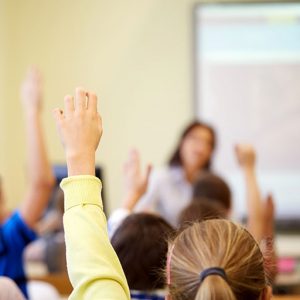Education for Special Needs
When a child has special educational needs or a disability, learning can be much harder, and it doesn’t always happen as easily as it does for other children. Different styles of teaching, resources, additional equipment, or adaptations to the classroom may have to be made to enable children with additional needs in order for them to reach their full potential.
What is a Special Educational Need or Disability?
The term “Special Educational Needs” has a legal definition that is covered by both The Education Act of 1996 and the more recent Children and Families Act of 2014. To have a Special Educational Need, a child must have a learning difficulty or learning disability that makes it significantly harder for them to learn or to access education compared to most children of the same age.
The term “Disability” also has a legal definition under the Equality Act 2010. A person has a disability if they have a physical or a mental impairment that has a “substantial” and “long-term” negative effect on their ability to do normal daily activities.
The terms “Substantial” and “Long-Term” are also defined within the same Act as being:
Substantial – more than minor or trivial. For instance, it would take someone significantly longer to complete a normal daily task such as getting dressed.
Long-term – is defined as lasting for more than 12 months.
Altogether, around 16% of all children and young people will be identified as having some form of SEN at some stage during their education, although most of them will have their educational needs successfully met within the mainstream classroom. Just over 1% of children will have a level of SEN that is so significant that they may need a specialist educational provision, such as attending a special school.
The is a lot of cross-over between special educational needs and disability, and many children who have a disability will also have an additional special educational need. However, this isn’t always the case, and every child’s need should be addressed individually.
There are many different types of educational need, and even with children who have broadly similar needs, the approaches each child will benefit from may vary widely. Here are some of the types of need that the term SEN covers:
A specific learning difficulty, such as dyslexia, dysgraphia, dyspraxia or Attention Deficit Hyperactivity Disorder
A learning disability, which can be mild, moderate, severe or profound and multiple
A Speech and Language Disorder
A Sensory Processing Disorder
An Autistic Spectrum Disorder
A behavioral, emotional or social difficulty
There is sometimes confusion over the terms “Learning Difficulty” and “Learning Disability”. A learning difficulty normally refers to a specific aspect of learning, such as Dyslexia which affects the acquisition of reading skills. A Learning Disability normally refers to an Intellectual Impairment and there are different levels of Learning Disability depending on severity, ranging from Mild to Profound and Multiple.
However, many children have both a Learning Disability and at least one Learning Difficulty, as well as other disabilities or medical conditions.
Goals:
Learn to identify the specific special needs in the student
How to work with a student with special needs
Course Content:
Module 1: Introduction To Special Education
In this module you will learn how to correctly define special education and the main responsibilities of teachers who teach students with special educational needs. You will be introduced to the concept of least restrictive environment and how to modify assessments for students with special educational needs.
Module 2: Learning Disabilities
Learn how to correctly define learning disability and how to distinguish a learning disability from other types of disabilities. You will be introduced to strategies that can help students with learning disabilities.
Module 3: Attention Deficit Hyperactivity Disorder (ADHD)
This module introduces Attention Deficit Hyperactivity Disorder (ADHD) and behavioral signs exhibited by students. You will learn about the drugs that students with ADHD take to reduce their symptoms and practical problems associated with taking these drugs. The modules also describe strategies that a teacher can use to teach students with ADHD.
Module 4: Intellectual Disabilities
You will learn how to distinguish between an intellectual disability and a learning disability, and the strategies that teachers use when teaching students with intellectual disabilities.
Module 5: Behavioral Disorders
You will learn about potential types of triggers of inappropriate behavior. You will be introduced to examples of problematic behavior that a student with a behavioral disorder might display and strategies for teaching students with behavioral disorders.
Module 6: Physical Disabilities And Sensory Impairments
You will learn to recognize the signs of hearing loss and visual impairment and strategies for teaching students with hearing loss and visual impairment.
Module 7 Course Assessment
Bibliography:
Munday, J. B. (2016). Teaching a Child with Special Needs at Home and at School. WestBowPress.




